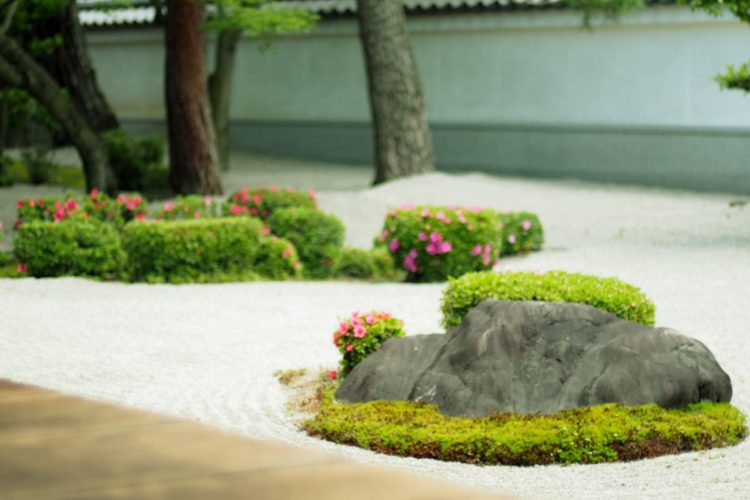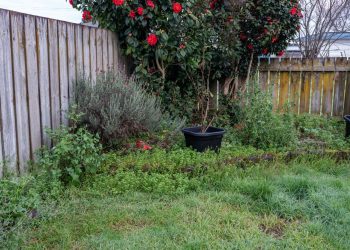A Zen garden can be an excellent landscaping choice to create a relaxing and meditative space while keeping your landscaping maintenance easier. Designing your yard layout with intention can promote calm and create a refuge from the bustle of daily living. If you are hoping to make your garden spot a zen haven, there are a few key ideas you should consider.
Do Your Research
Zen gardens are well-curated and designed with guiding principles; understanding these design principles and how they are executed will help you create a space you will be proud of at home. Be sure to do your research and visit any local Zen gardens you can; this can help you get a true feel for the atmosphere your Zen garden should evoke.
- Austerity (Koko)
- Simplicity (Kanso)
- Naturalness (Shizen)
- Asymmetry (Fukinsei)
- Subtlety/Mystery (Yugen)
- Unconventional (Datsuzoku)
- Stillness (Seijaku)
Embrace Minimalism
Based on the 7 guiding principles of a Zen garden, you won’t be surprised to learn that minimalism is a core goal when designing your space. It can be too easy to get overzealous when viewing your space and plan to incorporate too many elements or items. Remember that Zen gardens embrace simplicity and a landscape that incorporates natural elements—a true Zen garden has sparse foliage and incorporates every element with intention and precision. A focus on hardscaping makes this an excellent landscaping choice for anyone looking to lessen maintenance or water use.
Choose Plants Wisely
Traditional Zen Gardens rely mostly on hardscaping elements. However, you will want to incorporate some foliage and plant life. Ensure that you are choosing those plants wisely. Think about important practical considerations such as lighting levels, your local climate, and how much maintenance each plant or tree will require. On a special note, remember that some varieties of bamboo can be extremely invasive. Keep it contained in a concrete planter so that your design doesn’t take on a life of its own.
Provide Practical Enjoyment
A great yard and garden space allows you and your guests to truly utilize and enjoy the area. Don’t get so caught up in design aesthetics that you forget practical enjoyment elements. Think about how you will be using the garden. Add wood or stone benches for reading, relaxing, and meditating. Or set aside an area for enjoying your meals outdoors when the weather allows. Keep your additions within the design motif—using textures and materials that make sense for the design, but don’t be afraid to deviate from standard Zen garden practices to fully curate a space that you and your family can enjoy.











